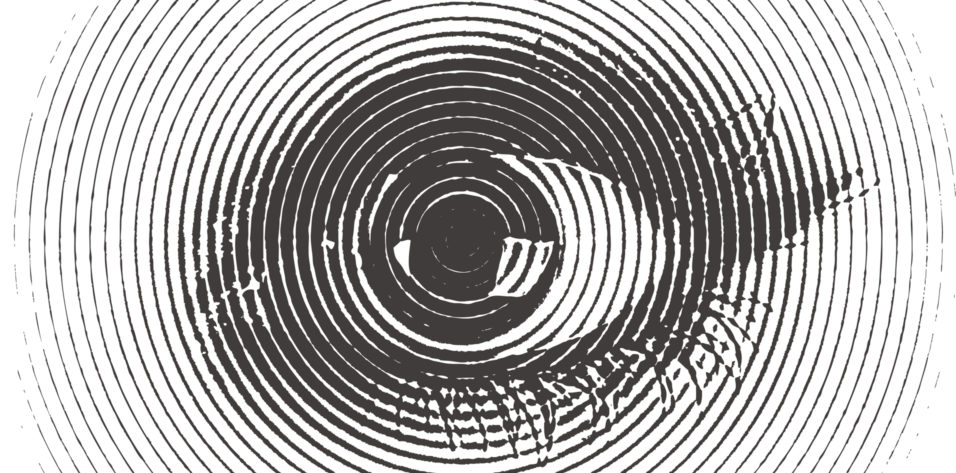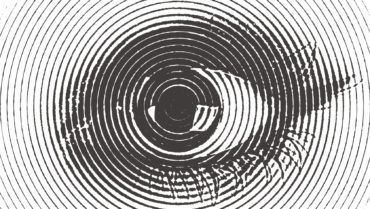

Bilateral Morphometric Analysis of Corneal Sub-Basal Nerve Plexus in Patients Undergoing Unilateral Cataract Surgery: a Preliminary In Vivo Confocal Microscopy Study
Giannacare G, Bernabei F, Pellegrini M, et al1
Industry support: None
ABSTRACT SUMMARY
Using confocal microscopy, Giannacare et al analyzed the subbasal corneal nerve plexus in eyes that had undergone unilateral cataract surgery through a 2.2-mm corneal incision. Confocal microscopy of the central cornea was performed in both the operated and unoperated eyes of 30 patients before and 1 month after uneventful unilateral cataract surgery. Corneal sensitivity was evaluated using the classic Cochet-Bonnet device.
Study in Brief
A small study detected a statistically significant bilateral reduction in most of the main parameters of the subbasal nerve plexus after unilateral cataract surgery. This finding may explain the common bilateral occurrence of dry eye disease symptoms after uneventful unilateral phacoemulsification.
WHY IT MATTERS
This study suggests that the contralateral eye should not be used as a control when analyzing corneal innervation or dry eye disease symptoms or signs after unilateral cataract surgery.
A reduction in most of the main parameters of the subbasal nerve plexus was found in both eyes when findings from the pre- and postoperative examinations were compared. Although the effect was more marked in the operated eye, the effect on the nerve plexus of the unoperated eye was also statistically significant.
Giannacare et al therefore recommend not using the contralateral eye as a control in studies analyzing the effect of any surgery on only one eye. They also suggest deferring surgery on the second eye for more than 1 month in order to avoid exaggerated symptoms of ocular discomfort (ie, dry eye disease [DED]) that may arise if cataract surgery is performed on the second eye before full regeneration of the corneal nerves is achieved in the first eye.
DISCUSSION
DED often develops after or is aggravated by cataract surgery.2 Tear osmolarity is believed to be the main marker for DED. Evidence suggests, however, that tear osmolarity values do not change significantly after cataract surgery2 or corneal laser vision correction.3 The explanation for this apparent paradox (ie, the same tear osmolarity values despite worsening DED symptoms) must be related to other factors such as injury to the corneal nerves and their regeneration, as described by Belmonte et al.4 Unlike in other forms of DED, the major causative factor of surgically induced DED therefore seems to be the neuropathic component. In other words, it may be the abnormal activity of regenerating cold receptor nerve fibers (dysesthesia) that causes the DED symptoms.5 This hypothesis could explain surgically induced DED, which is not typically associated with changes in objective parameters of the tear film such as osmolarity, Schirmer score, or tear breakup time.2,3
The finding by Giannacare et al1 that a unilateral corneal injury affects the contralateral eye makes the situation more complex and is hard to explain. We find it difficult to infer from this study that cataract surgery on the second eye should be deferred until the corneal nerves of the first eye have regenerated fully. Rather, perhaps immediate sequential bilateral cataract surgery is preferable because the overall duration of surgically induced DED might then be shorter.
Cross-Sectional Study on Corneal Denervation in Contralateral Eyes Following SMILE Versus LASIK
Liu YC, Jung ASJ, Chin JY, Yang LWY, Mehta JS6
Industry support: None
ABSTRACT SUMMARY
A randomized paired-eye study evaluated and compared the long-term consequences of corneal denervation after SMILE versus LASIK in 24 patients. At a mean of 4.1 years postoperatively, the LASIK eyes exhibited significantly less corneal nerve fiber density, corneal nerve branch density, corneal nerve fiber length, and corneal total branch density compared to SMILE eyes. The LASIK eyes also had significantly more nerves showing new branches growing than did SMILE eyes. The differences were statistically significant, but the magnitude of the differences was small.
Study in Brief
This is the first randomized paired-eye study to compare long-term corneal reinnervation after SMILE versus LASIK. Full recovery in the major parameters of the corneal subbasal nerve plexus did not appear to occur after either procedure, although SMILE seemed to offer a slight advantage in this regard.
WHY IT MATTERS
Persistent DED is uncommon years after SMILE and LASIK. A healthy ocular surface therefore does not appear to require a perfect subbasal nerve plexus. Furthermore, the slight difference in the behavior of corneal nerves after both refractive procedures seems to challenge the commonly accepted hypothesis that the corneal subbasal nerve plexus is much better preserved after SMILE than after LASIK.
At 5.5 years, corneal nerve fiber density and corneal nerve branch density were significantly lower in SMILE and LASIK eyes than in eyes with healthy virgin corneas.
DISCUSSION
It has been suggested that SMILE induces a lower incidence of postoperative DED than LASIK because the former procedure preserves more corneal nerves. That is to say, the small corneal incision made during SMILE should reduce the area of nerve truncation compared to the larger diameter of the LASIK flap cut. The hypothesis, then, is that SMILE causes less damage to the corneal nerves and that they should regenerate more quickly than after LASIK.7
DED, however, occurs after SMILE.8,9 The smaller vertical incision performed in SMILE compared to LASIK does not seem to explain the similarly significant long-term effect on the subbasal nerve plexus observed after both procedures.6 Given that the majority of the horizontal nerve trunks entering the cornea run more than 120 µm deep into the stroma,10,11 it is plausible that (1) both LASIK and SMILE induce significant transient corneal denervation largely because of the cutting of vertical corneal nerves (ie, those that run vertically to penetrate Bowman layer to create the subbasal plexus)2,3 when horizontal incisions are made in the cornea and (2) the contribution of the vertical cut is much less significant. This hypothesis could explain the huge effect that SMILE and LASIK (slightly less effect with SMILE) have on the subbasal nerve plexus during the very early postoperative period. It could also explain why subepithelial innervation differs significantly in operated eyes even 5.5 years after both procedures compared to healthy virgin corneas.
1. Giannacare G, Bernabei F, Pellegrini M, et al. Bilateral morphometric analysis of corneal sub-basal nerve plexus in patients undergoing unilateral cataract surgery: a preliminary in vivo confocal microscopy study. Br J Ophthalmol. 2021;105(2):174-179.
2. Gonzalez Mesa A, Paz Moreno-Arrones J, Ferrari D, Teus MA. Role of tear osmolarity in dry eye symptoms after cataract surgery. Am J Ophthalmol. 2016;170:128-132.
3. Sauvageot P, Julio G, Alvarez de Toledo J, Charoenrook V, Barraquer RI. Femtosecond laser–assisted laser in situ keratomileusis versus photorefractive keratectomy: effect on ocular surface condition. J Cataract Refract Surg. 2017;43(2):167-173.
4. Belmonte C, Aracil A, Acosta C, Luna C, Gallar J. Nerves and sensations from the eye surface. Ocul Surf. 2004;2(4):248-253.
5. Belmonte C, Gallar J. Cold thermoreceptors, unexpected players in tear production and ocular dryness sensations. Invest Ophthalmol Vis Sci. 2011;52(6):3888-3892.
6. Liu YC, Jung ASJ, Chin JY, Yang LWY, Mehta JS. Cross-sectional study on corneal denervation in contralateral eyes following SMILE versus LASIK. J Refract Surg. 2020;36(10):653-660.
7. Mohamed-Noriega K, Riau AK, Lwin NC, Chaurasia SS, Tan DT, Mehta JS. Early corneal nerve damage and recovery following small incision lenticule extraction (SMILE) and laser in situ keratomileusis (LASIK). Invest Ophthalmol Vis Sci. 2014;55(3):1823-1834.
8. Shen Z, Zhu Y, Song X, Yan J, Yao K. Dry eye after small incision lenticule extraction (SMILE) versus femtosecond laser-assisted in situ keratomileusis (FS-LASIK) for myopia: a meta-analysis. PLoS One. 2016;11(12):e0168081.
9. Sambhi RS, Sambhi GDS, Mather R, Malvankar-Mehta MS. Dry eye after refractive surgery: a meta-analysis. Can J Ophthalmol. 2020;55(2):99-106.
10. Al-Aqaba MA, Fares U, Suleman H, Lowe J, Dua HS. Architecture and distribution of human corneal nerves. Br J Ophthalmol. 2010;94(6):784-789.
11. Medeiros CS, Santhiago MR. Corneal nerves anatomy, function, injury and regeneration. Exp Eye Res. 2020;200:108243.




